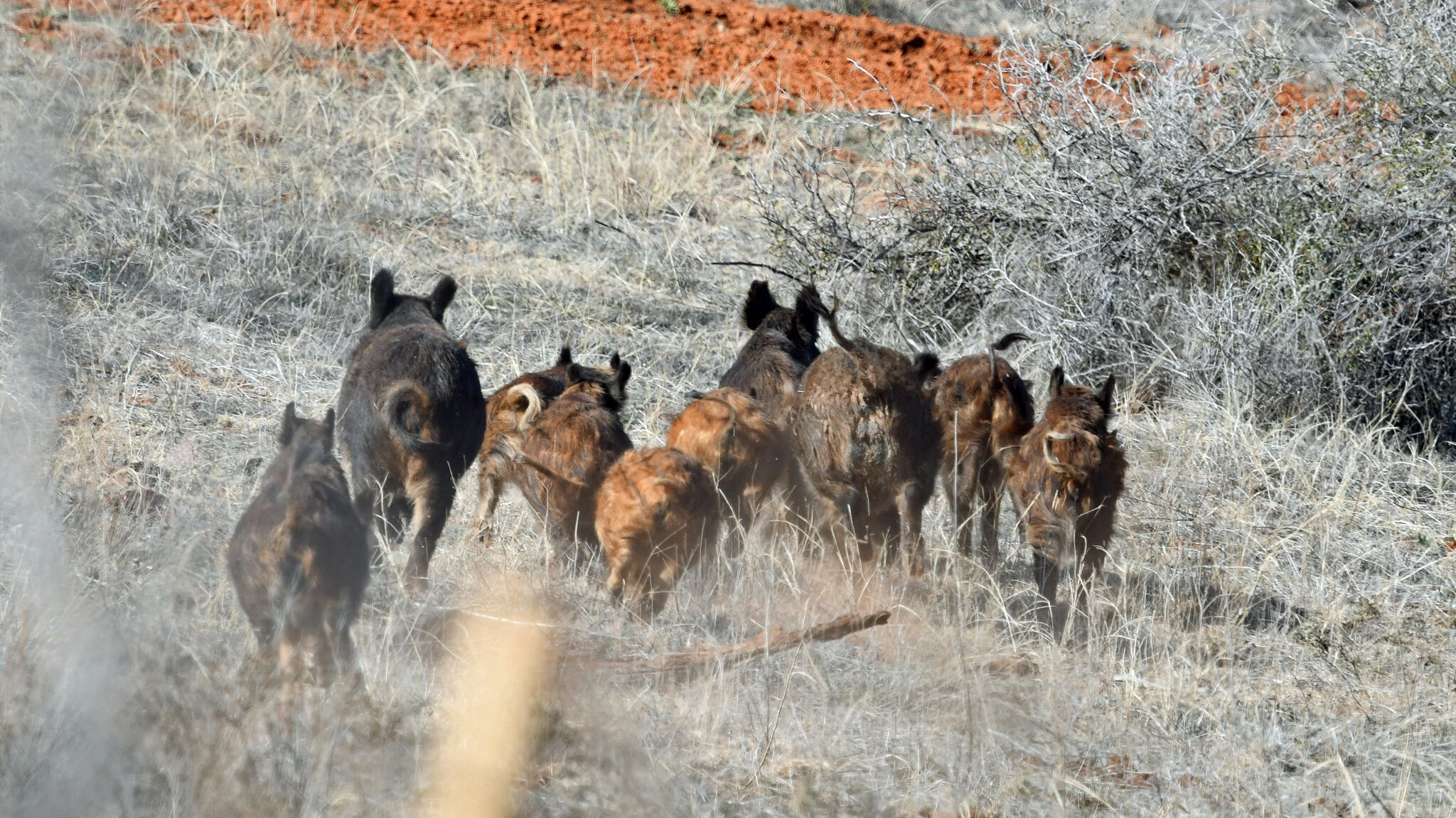Under certain circumstances, an aerial gunning event can be a very useful addition to a feral hog integrated pest management plan. Unlike recreational hunting from a helicopter, this tool consists of hiring professionals to fly a helicopter over a property and shoot as many hogs as possible. This process can remove large numbers of hogs, but not necessarily all of them. Additionally, this type of management is most effective in areas with limited canopy cover. A study conducted in Texas found that aerial gunning can remove approximately 31% of a feral hog population in a single flight. Subsequent flights were able to increase the percentage removed to 56% and 67% respectively.
It is important to note that aerial shooting of wildlife is illegal under the federal Airborne Hunting Act. However, that act does provide exceptions for depredation management. In Texas, the Texas Parks and Wildlife Department issues the permits necessary to conduct this activity. Landowners should only contract with helicopter vendors who are permitted by TPWD. Further, the vendor must also obtain a Land Owner Agreement (LOA) which gives the vendor permission to hunt the property. Coordinating LOA’s between neighboring landowners can make aerial shooting more efficient. Even if the cost of the helicopter is not split amongst landowners, the increased access can allow the helicopter crew to remove even more hogs from surrounding areas thereby reducing the overall local population.
In areas of high hog density, the cost per pig removed can make this a very cost-effective tool. However, there must be an adequate amount of acreage unoccupied by humans for the helicopter to fly. When possible, managers can also coordinate with neighbors to increase the acreage that the helicopter has permission to fly. A helicopter operation can effectively cover 2,000-5,000 acres per day, depending on cover and hog density. Thicker cover and greater numbers of pigs present will decreases the acreage a pilot can cover in a single day.
Scheduling is another important factor to consider when planning to use this tool on a property. In areas where some brush or tree cover exists, managers can improve helicopter visibility by selecting for late winter when many trees do not have leaves. Additionally, ambient temperature can affect aerial shooting success. During the hot periods of the year, feral hogs become nocturnal and retire to thick cover during the day which can make locating hogs more difficult. The hot temperatures also affect helicopter efficiency, as smaller helicopters have to fly faster to remain airborne. With cooler daytime temperatures, helicopters can slow down and the shooter can remove entire sounders of hogs. Managers should also be strategic in regard to their livestock operations. There is evidence to suggests this type of management may temporarily attract other predators to the property to scavenge feral hog carcasses. For this reason, it is important that managers schedule these events to either not take place near livestock or to not overlap with calving season.
